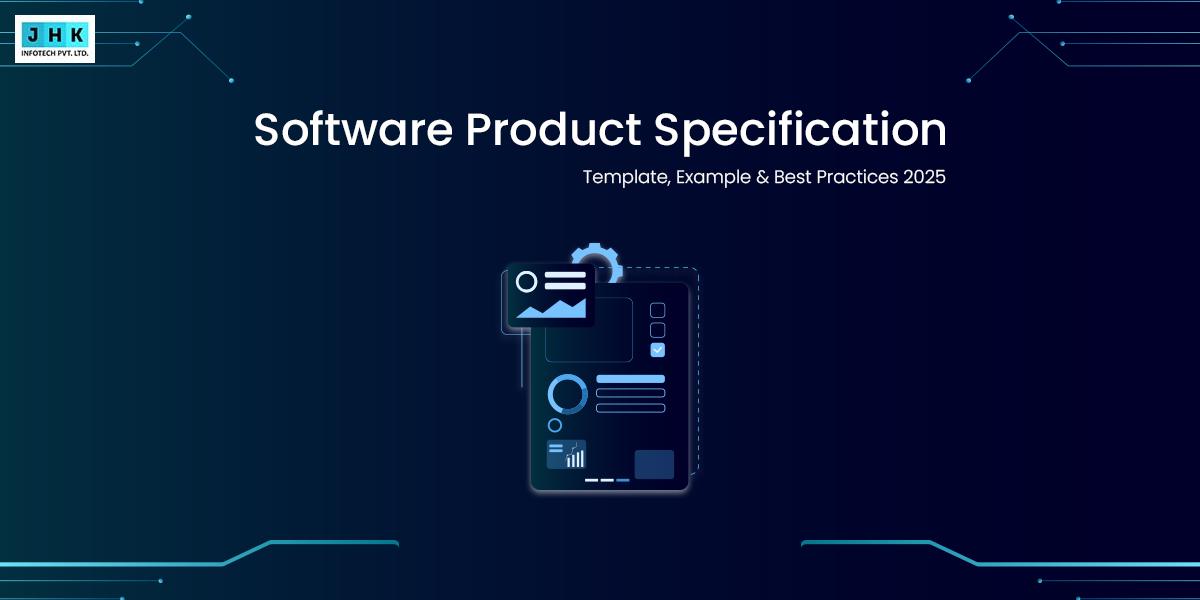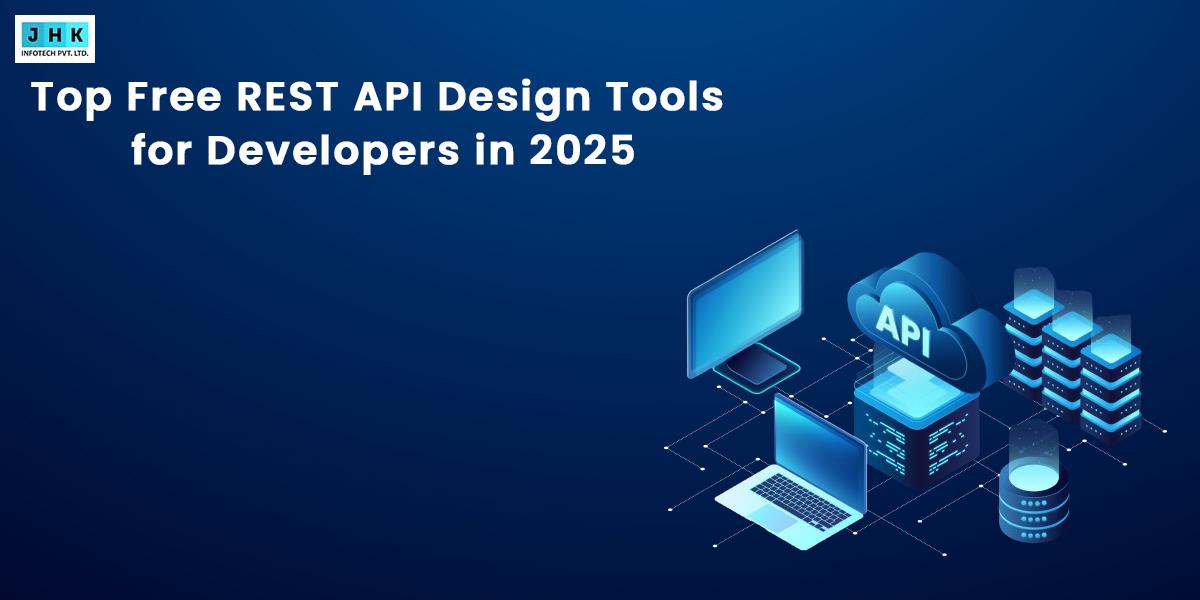Top Android App Development Trends to Watch in 2025

Mobile technology is evolving at a pace that few industries can match, with smartphones becoming increasingly central to modern life. In 2025, Android app development trends is poised for remarkable innovations, driven by the rapid growth in AI, connectivity, and consumer expectations.
The Android operating system, which powers billions of devices worldwide, remains at the forefront of app development trends, continually adapting to technological shifts. Key trends will include deeper integration of artificial intelligence, advancements in user interface design, and the proliferation of connected devices, all of which will reshape the mobile ecosystem in significant ways.
Rise of Artificial Intelligence in Android App Development
Artificial intelligence is poised to revolutionize Android apps, offering developers new tools for creating more intuitive and intelligent user experiences. AI algorithm enable smarter decision-making, enhancing app functionality by learning from user behavior.
The integration of machine learning helps apps analyze vast amounts of data, making personalized recommendations and automating processes. Personalization has become a core aspect of app design, with AI driving tailored experiences—from dynamic content delivery to customized interfaces—providing users with highly relevant and efficient interactions.
The Role of Augmented Reality (AR) in Android Apps
Augmented reality has moved from novelty to necessity in Android apps, transforming the way users interact with the digital world. AR is enhancing real-world experiences, with applications ranging from gaming to retail. By overlaying digital content onto physical environments, AR creates an immersive user experience that is rapidly gaining traction.
Industry-specific applications, such as virtual try-ons in fashion and interactive design tools in home improvement, are just the beginning. AR is also reshaping the gaming industry, enabling users to experience video games in dynamic, real-world settings.
5G Connectivity and Its Influence on Android Apps
5G networks are set to fundamentally transform Android app development, offering faster speeds and ultra-low latency. With 5G, app performance will soar, supporting real-time, high-bandwidth applications such as video streaming, multiplayer gaming, and augmented reality experiences.
The low latency of 5G will enable seamless real-time data processing, allowing developers to push the boundaries of app functionality. As this next-gen network becomes more widespread, it will be crucial for app developers to optimize their apps for 5G, ensuring faster and more reliable performance.
Kotlin’s Dominance in Android App Development
Kotlin has solidified its position as the primary programming language for Android development, surpassing Java as the top choice for creating new apps. Kotlin’s concise syntax and enhanced functionality make it more developer-friendly, promoting faster development cycles.
It also features built-in support for modern features such as null safety and seamless integration with Java. As more developers adopt Kotlin, its role in Android development will continue to expand, driving efficiency and innovation in app creation.
Cross-Platform Development: Flutter and React Native Trends
Cross-platform frameworks are becoming increasingly popular, allowing developers to build apps that work across both Android and iOS. Among the leading frameworks, Flutter and React Native stand out, each offering distinct advantages.
Flutter, backed by Google, offers high-performance rendering and a rich set of widgets for creating visually appealing apps, while React Native, developed by Facebook, allows for faster development cycles and a large developer community.
In 2025, the competition between these two frameworks will intensify, with both continuing to shape the landscape of cross-platform app development.
Cloud Integration in Android Apps
Cloud computing is altering how Android apps are developed and deployed. By leveraging the cloud, developers can enhance the scalability, security, and overall performance of their apps.
Cloud storage allows users to access their data across multiple devices seamlessly, while backend services can be integrated into apps to handle tasks such as real-time syncing and processing.
In the coming years, more apps will rely on cloud-based infrastructure to provide a more connected and efficient experience for users, enabling enhanced collaboration and data access on the go.
Blockchain Technology in Android App Development
Blockchain technology is no longer confined to cryptocurrencies; it is becoming increasingly relevant for app development, particularly in security and data integrity.
By utilizing blockchain, developers can create tamper-proof, transparent systems that guarantee data authenticity. This has significant implications for industries like finance, where Android apps can use blockchain to securely manage transactions.
Additionally, blockchain’s decentralized nature makes it an ideal solution for developing trustless environments in apps, offering users more control over their personal data.
Android App Development for Wearables
The rise of wearable technology has created new opportunities for Android app developers, extending the reach of mobile apps into everyday life. Wearables, such as smartwatches and fitness trackers, have become integral to health and wellness monitoring, providing real-time data and insights directly to users.
As wearables continue to evolve, Android app developers will increasingly focus on creating apps that seamlessly integrate with these devices, from fitness tracking and sleep monitoring to more sophisticated medical applications.
The Evolution of App UI/UX Design Trends
In 2025, user interface (UI) and user experience (UX) design will continue to play a central role in Android app development. Minimalism, flat design, and intuitive interfaces will remain at the forefront, ensuring that apps are visually appealing and easy to navigate.
Accessibility will also take precedence, with more apps prioritizing inclusivity by offering features such as voice commands, high-contrast modes, and adaptable font sizes.
The design experience will be focused on delivering a seamless journey across devices, ensuring users have a consistent, high-quality experience no matter the platform.
Voice-Activated Apps and Smart Assistants
Voice technology is revolutionizing how users interact with Android apps, especially with the rise of smart assistants like Google Assistant. Developers are increasingly integrating voice controls to enhance user convenience, enabling hands-free interactions with apps.
This shift towards voice-activated apps is making it easier for users to interact with their devices in natural, conversational ways. For developers, the challenge lies in creating intuitive voice UIs that can understand and respond to a wide range of voice commands, improving the overall accessibility and usability of Android apps.
Android App Security Trends in 2025
As the number of Android apps grows, so do the security risks. With more users relying on mobile apps for everything from banking to social interactions, safeguarding personal data has become a top priority.
In 2025, enhanced security protocols, including end-to-end encryption and biometric authentication, will be standard practice for Android apps. Biometric authentication, such as fingerprint scanning and facial recognition, will become increasingly sophisticated, providing a secure and user-friendly method of access to apps.
Internet of Things (IoT) and Android App Integration
The Internet of Things (IoT) is one of the most transformative trends in technology, and Android apps are central to its success. IoT enables the seamless connection of everyday devices—such as smart thermostats, refrigerators, and light bulbs—to the internet.
Android apps play a crucial role in managing and controlling these devices, offering users a unified interface to interact with their IoT-enabled environment.
As more connected devices hit the market, the role of Android apps in building and managing these ecosystems will continue to grow, creating smarter homes and cities.
Sustainability in Android App Development
As environmental concerns rise, sustainable development practices are becoming a key consideration in Android app creation. Developers are focusing on creating apps that minimize energy consumption and reduce their carbon footprints.
This includes optimizing code, reducing the app’s resource usage, and making efficient use of server and cloud infrastructure. Sustainability in app development is becoming not only an ethical priority but also a competitive advantage as consumers increasingly demand eco-friendly solutions.
Push Notifications and Real-Time Engagement Trends
Push notifications remain one of the most effective ways to engage users and drive app retention. In 2025, personalized push notifications will be more sophisticated, offering tailored messages based on user behavior and preferences.
Real-time notifications will keep users updated with relevant information instantly, from special offers to breaking news. For developers, understanding how to effectively use push notifications without overwhelming users will be key to maintaining engagement and enhancing the overall user experience.
The Growth of Mobile Payments and E-Wallet Apps
The global shift towards digital payments is accelerating, with mobile wallets and e-wallet apps leading the charge. Android apps are playing a central role in this transformation, offering users a secure and convenient way to make payments directly from their smartphones.
Features such as contactless payments, peer-to-peer transfers, and integration with loyalty programs are becoming increasingly common. As more consumers adopt mobile payments, Android apps will continue to evolve, introducing innovative features to make financial transactions easier, faster, and more secure.
The Importance of App Performance Optimization
App performance is critical for user retention, with slow loading times and laggy interactions often leading to high uninstallation rates.
In 2025, Android developers will place even greater emphasis on performance optimization, ensuring that apps run smoothly and efficiently across all devices.
Techniques such as minimizing app size, optimizing images, and reducing server response times will be essential for maintaining a seamless experience. The faster and more reliable an app is, the more likely users will return, making performance a key differentiator in the competitive app marketplace.
App Monetization Trends for 2025
As the mobile app market matures, developers are diversifying their monetization strategies. Subscription models, in-app purchases, and freemium versions are becoming standard methods of generating revenue.
However, new methods such as ad-free premium versions and blockchain-based transactions are emerging as alternative revenue streams. In 2025, developers will continue to refine these monetization strategies to balance user experience with revenue generation, ensuring that apps remain profitable without alienating their user base.
User Retention Strategies for Android Apps
User retention remains one of the biggest challenges for Android app developers. To keep users engaged, developers will focus on offering personalized experiences, using data analytics to create customized app interactions.
Regular updates, loyalty rewards, and gamification will also play an important role in keeping users coming back. By building a strong connection with users and providing consistent value, Android app developers can significantly improve long-term retention rates.
Cloud Gaming on Android: The Next Big Trend
Cloud gaming is swiftly gaining momentum, as platforms such as Google Stadia and Nvidia GeForce Now are revolutionizing the mobile gaming experience.
In 2025, Android devices will continue to evolve as platforms for cloud gaming, allowing users to play console-quality games without the need for high-end hardware.
Game streaming will reduce latency, improve graphics quality, and enable real-time multiplayer experiences on mobile devices. Cloud gaming will undoubtedly be one of the most significant trends in the mobile gaming world.
The Rise of Android App Development for Healthcare
Android apps are playing an increasingly important role in healthcare, particularly with the rise of telemedicine and remote patient monitoring. From fitness apps to virtual doctor consultations, Android platforms are facilitating better health management, improving accessibility and convenience for users.
With growing concerns about data privacy and security, developers will need to prioritize safeguarding sensitive health data, ensuring compliance with regulatory standards and building trust with users.
Future Outlook: What’s Next for Android App Development?
The future of Android app development is shaped by rapid technological advancements, such as AI, AR, 5G, and IoT. As these technologies evolve, so will the apps built on the Android platform.
Developers will need to stay ahead of the curve by continually adopting and integrating new technologies, ensuring their apps remain relevant and competitive.
The rise of new hardware, such as foldable smartphones and augmented reality headsets, will also open up new possibilities for Android app development.
Final Thought
To stay ahead of the curve, Android developers must embrace emerging technologies and continue to innovate in app design, functionality, and performance. The trends outlined here represent just a glimpse into the exciting possibilities that lie ahead.
By integrating the latest advancements, developers can create apps that offer exceptional user experiences and remain at the forefront of the ever-evolving mobile app landscape.










